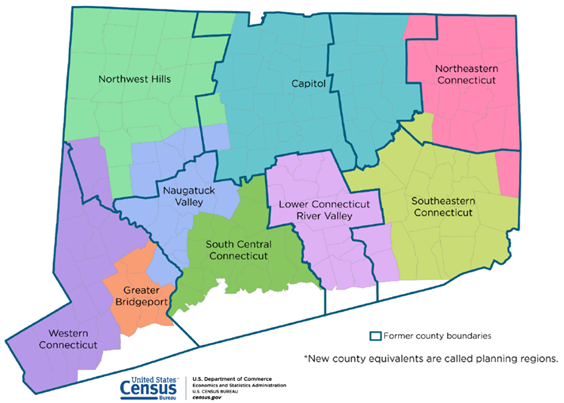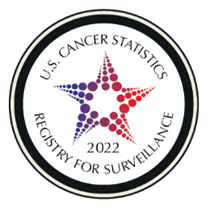| CTR Home | Data & Statistics | Research | Resources for Registrars | Reporting Requirements | Other Resources | Contact CTR|

The identities of all patients reported are protected by state confidentiality laws.
The registry has been part of the National Cancer Institute’s Surveillance, Epidemiology, and End Results (SEER) program since its inception in 1973. SEER data are reported by 19 geographical areas comprising approximately 34% of the US population, selected for their ability to manage a high quality cancer surveillance system and to provide a representative subset of the nation’s population.
***NEWS***
*** Changes in Geographies for Reporting Cancer Statistics ***
In 2017, Connecticut petitioned the US Census to replace our 8 counties with Connecticut’s 9 planning regions. Counties ceased to function as governmental and administrative entities in the state in 1960. Adopting planning regions as county-equivalents by the Census Bureau means that all Census data products for collecting, tabulating, and distributing statistical information will align with the planning regions used in state governance.
The Census Bureau approved Connecticut’s request in June 2022 and has already implemented the change. The upcoming release of 2022 population estimates uses the county-equivalent planning regions (CEPRs). By 2024, all Census operations and publications will use the 9 planning regions as the county- equivalents – with the exception of the 2020 Decennial Census data publications and other datasets published before June 1, 2022.
What are county-equivalent planning regions?
CEPRs represent regional councils of town governments (COGs) which are a group of member municipalities that cooperate on strategic planning and practical interests, such as efficient delivery of services, bulk purchasing, and managing jointly held natural resources. Planning regions are designated under section 16a 4a (4) of the Connecticut General Statutes.
What does this mean for health data users?
• The Census Bureau is the official source of population estimates and various social and economic indicators for the State of Connecticut.
• Federal, state, and local government agencies rely on the Census Bureau’s population estimates to calculate health metrics and to allocate funds to state and municipal governments.
• The Census Bureau will be releasing the 2022+ population estimates using CEPR only; county-based population estimates will not be available.
• DPH surveillance metrics and reports that include county will need to adopt planning regions from 2022. This will include the reporting of cancer incidence and mortality rates.
The Bottom Line
For diagnosis (or death) year 2022 onwards, cancer rates by county will not be available; rates will be reported for CEPRs instead.

For further information, contact DPH.CTROperations&Research@ct.gov


For more information, please contact CTR at (860) 509-7163.
This work has been supported by federal funds from the National Cancer Institute, National Institutes of Health, Department of Health and Human Services, under Contract No. HHSN261201800002I.

